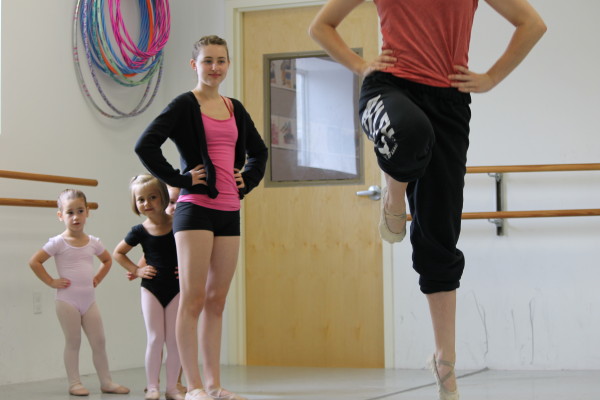I learned to teach by first being an assistant. I was completely silent in front of the students. The teacher slowly coached me into being a good assistant. I learned more about the do’s and don’ts when I went to college. I tried different methods of assisting, and I had some people assist me. I learned that there is a difference between teaching, coaching, tutoring, and assisting.
I have learned that some people really don’t know how to be a good assistant. Maybe because they haven’t been taught, maybe because the teacher hasn’t given them any instruction. But an assistant really can make or break a class.
Do be the best student in the classroom. The students will learn appropriate dance-class behavior by watching the assistant. They will learn when it is appropriate to talk if you only talk when asked a question or when you raise your hand. They will learn that when the teacher says “Ready?” they should immediately get into preparation position.
 |
| Does anyone know who owns this image? I'd love to give credit! |
One of the hardest things was not correcting the teacher when she made a mistake. I remember one time she got passé and retiré switched. But I didn’t say anything. And that was the right choice.
Later in the semester, she had me teach the class and she acted as assistant (since I was a pedagogy student, she wanted to watch me teach and give me some pointers). I watched as she fell into the role flawlessly and did the same thing I did: she assisted, she didn’t try to be a second teacher. And the class went much smoother than if she’d accidentally undermined me as the teacher (even though she was the one with the degree).
Don’t just show up for class when the students show up.
Do show up five to ten minutes early and talk with the teacher (if possible). Ask the teacher specifically how you can be the most useful to them, what their goals are for the class, the lesson plan for the day, etc. If you need them, you could even ask for the combinations ahead of time!
Don’t rephrase or re-correct a student. Say we’re laying on the floor with one leg up in the air and one leg long on the floor. I tell the student to “flex the standing leg and point the working leg.” the student is doing the opposite. I say the same thing again. The student still doesn’t respond. As an assistant, don’t say, “Switch your feet.” would it be easier to say that? of course. But as the teacher, I want the student to make the connection between want I’m asking them to do, and what they’re doing, and I want them to figure out what they need to do to change it. I don’t want them to “switch their feet.” I want them to listen to directions.
Do follow the teacher’s correction very clearly. In the example above, if you are doing it correctly, simply hold the position. The student may look at you and try to see what they’re doing wrong. They may not look at you at all. But you’re not moving because you are following the teachers directions.
Really what it comes down to is communication. Don’t be afraid to ask the teacher “what do you want from me!” Because don’t worry, they’ll tell you!
Photo credit: ronan.odonohoe via Visualhunt.com / CC BY











1 comments
This comment has been removed by a blog administrator.
ReplyDelete